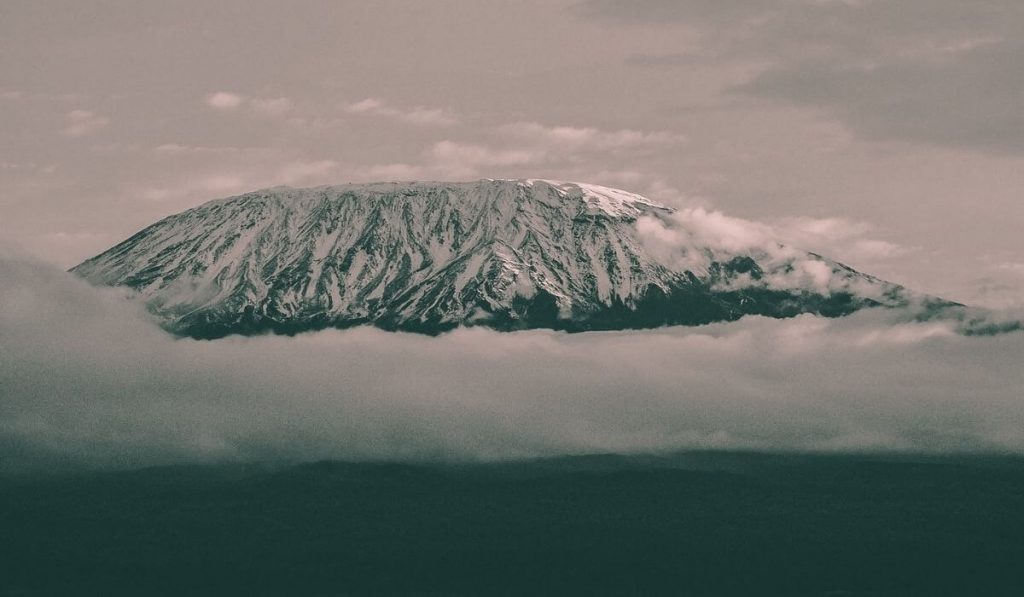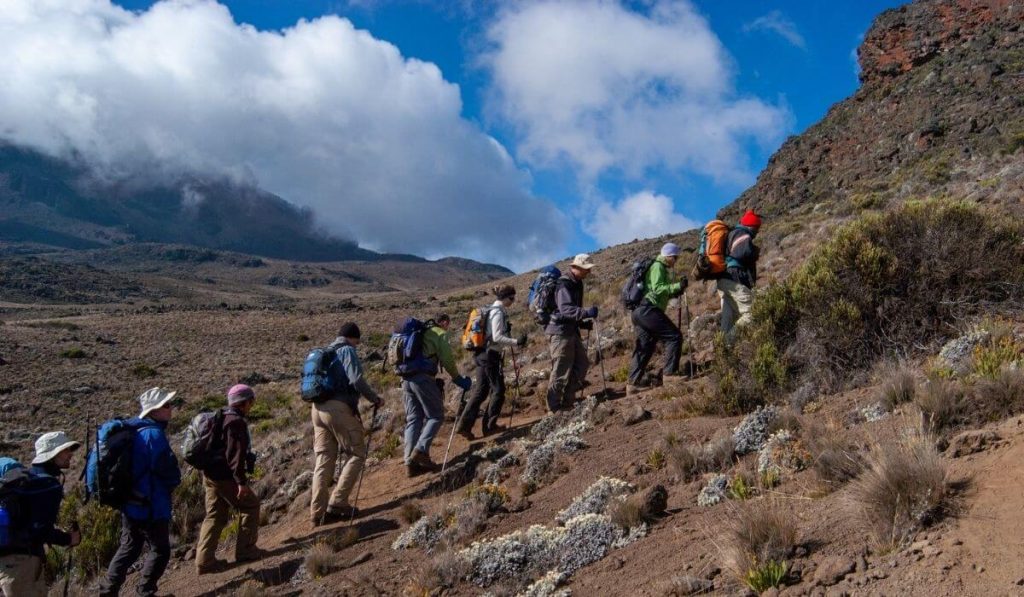![]() Kilimanjaro, a UNESCO World Heritage Site , is located in Tanzania in eastern Africa and is a well-known destination for many hikers around the world. Climbing Kilimanjaro is a great experience for many reasons. First, Kilimanjaro is the highest free-standing mountain in the world, which is not surrounded by mountain ranges. This means that you have a completely unique view, where you stand on top of Africa and feel that you can mirror the entire large continent. During the trip to the top you can also enjoy the view beyond the large savannah.
Kilimanjaro, a UNESCO World Heritage Site , is located in Tanzania in eastern Africa and is a well-known destination for many hikers around the world. Climbing Kilimanjaro is a great experience for many reasons. First, Kilimanjaro is the highest free-standing mountain in the world, which is not surrounded by mountain ranges. This means that you have a completely unique view, where you stand on top of Africa and feel that you can mirror the entire large continent. During the trip to the top you can also enjoy the view beyond the large savannah.
![]()
Who can climb Kilimanjaro?
The highest point on Kilimanjaro is Uhuru Peak which has an altitude of 5895 meters. Although the mountain shoots up to this impressive height, the trek can easily be done by anyone without the great experience in mountaineering. The mountaineering is in good conditions, with good trails and easily accessible terrain compared to other mountaineering. Therefore, the trip can be done by the vast majority, as long as the desire, courage and form are with.
What are the weather conditions like at Kilimanjaro?
The mountaineering of Kilimanjaro is also unique when it comes to the climate, as the trip extends over five different climate zones.
In the beginning you lay out in the rainforest, and move towards more barren area which changes to areas with very little vegetation. Then you will experience alpine desert and at the top you can experience snow for some periods.
As Tanzania is close to the equator, Kilimanjaro can be climbed 365 days a year, as temperatures do not change much. However, it will rain a lot from March to June as well as in November and December.
Practical information about Kilimanjaro
As a hiker, you have to pay a fee that gives permission to climb Kilimanjaro. The fee helps to finance the maintenance of the national park, as well as the routes and nature you walk on during the trip. In addition, you also have to cover the costs of porters and guides, but it is a lot cheaper than your own tax. If you travel with a company, they will most likely be responsible for this.
It is a requirement that you as a hiker have a guide on Kilimanjaro, however, it is not necessary to be with a group trip to have this, you can easily hire a guide yourself.

Food and drink on the trip
The food served during the trip is of good quality and often several servings with good dishes and desserts. You must not bring disposable bottles with you on the trip, which is why you often get water from springs on the mountain. Here it is recommended to boil the water or bring a water filter .
Routes on Kilimanjaro
There are several different routes to choose from in the hope of reaching the top of the mountain. The routes are of different length and duration, which means that there are varying chances of reaching the top. The longer the route, the greater the chances of reaching the top as well. Too fast a climb can lead to altitude sickness, which means that you have to stop the trip. Therefore, do not be tempted by shorter and cheaper routes, as you will often be busier to climb the mountain.
The following routes are the most used on Kilimanjaro:
Marangu route
- Duration: 5-6 days
Machame ruten
- Duration: 6-7 days
Lemosho route
- Duration: 7-8 days
Rongai route
- Duration: 6-7 days
Northern Circuit route
- Duration: 9 days
Shira route
- Duration: 6-7 days
Umbwe ruten
- Duration: 5-7 days
On some routes there are cabins with dormitories, bunk beds and dining facilities. Other routes must be spent in tents in the open air. On the tent routes there will often be tents where you can eat with the other hikers. Some routes offer less hygienic toilet conditions, while on other routes there are drag and drop options.
The first three routes are by far the most popular routes among hikers and also have good facilities. If you travel with a company, the route will often be determined by them, and as a single traveler, you can choose the route that best suits your needs.

Health and acclimatization
Due to the heights of Kilmanjaro, the air will be thinner the further you get up, and will be half as thick at the top as at sea level. This means that you can risk altitude sickness , which can be serious and should be taken seriously. If you experience symptoms, it is recommended to move down the mountain or talk to your guide.
You can prevent altitude sickness by acclimatizing and avoiding increasing the height and climbs too much. This allows your body to get used to the thinner air more easily. Expeditions like this always carry risks, so feel free to contact your doctor before departure for guidance. Here you can also get a prescription for altitude sickness pills if it is deemed necessary.
Work out for your trip on Kilimanjaro
As I said, Kilimanjaro can be climbed by the vast majority who have a good basic shape, as the trails are very accessible to get around. However, it is recommended to have a little bit of experience in hiking and overnight in nature. You have to walk many hours a day, so it is therefore recommended to train up for the trip. Feel free to bring packing and the right pair of hiking boots or hiking shoes , and increase the distance and duration every day. Also, try to challenge yourself on gravel and more uneven terrain. A good shape and experience will give you more time to enjoy the surroundings and the overall experience.
You should expect to spend 6-8 days climbing the mountain. In addition, it will also be practical with extra days for the trip, to get used to the climate and the practical things. It will also be obvious to combine the trip with a safari in Tanzania.




